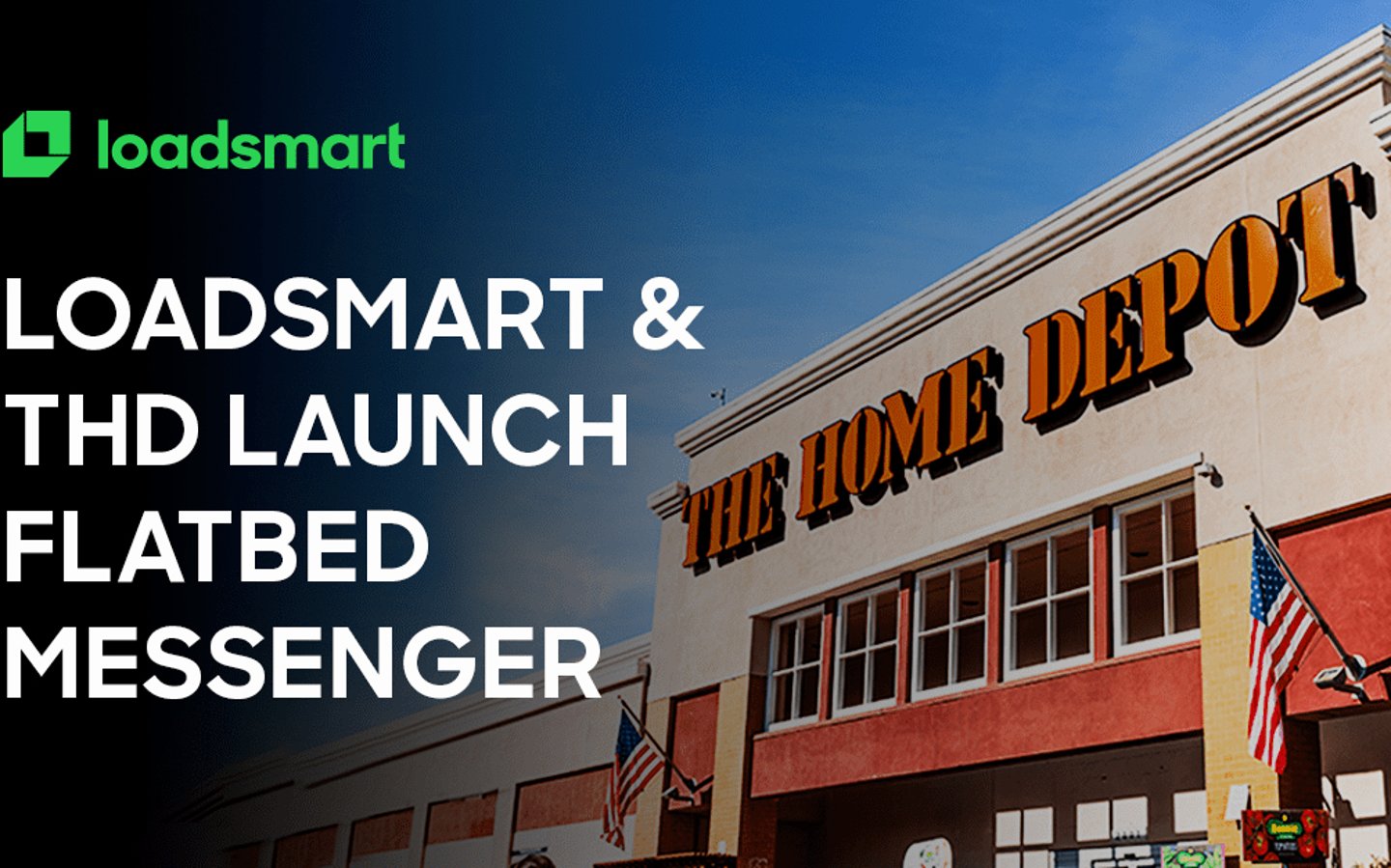Home Depot co-launches new flatbed marketplace
The Home Depot Inc. is partnering with freight technology company Loadsmart to roll out an automated, supply-led flatbed platform.
The platform, Flatbed Messenger, pairs capacity and price to a shipment instead of the reverse. Billed as the first marketplace of its kind, Flatbed Messenger combines Loadsmart’s advanced algorithms with dedicated capacity from The Home Depot in an effort to help shippers find flatbed capacity at lower rates, while also reducing emissions and improving environmental sustainability.
Backhauls (cargo carried on a return journey) in the flatbed industry typically require two customers – one for each direction. As a result, fleets that are dedicated to one customer often travel empty miles. Flatbed Messenger feeds a truck’s location, price, and destination into algorithms that match the information to a shipment.
According to Home Depot and Loadsmart, this system provides shippers access to flatbed capacity that was previously earmarked for a dedicated shipper, as well as visibility into lower flatbed rates through more affordable backhauls. For carriers, the service can reduce empty miles by enabling them to fill their backhauls and get matched to optimal pick-up locations.
The Home Depot and Loadsmart worked together on the concept, design framework and rollout of Flatbed Messenger. In 2020, Home Depot opened its first-ever flatbed distribution center (FDC), an 800,000-sq.-ft. facility in Dallas. The company plans to eventually build 40 flatbed distribution centers in the 40 largest markets, so it can bring bulk orders of construction and building materials to customers on a same-day, next-day basis.
“Automated supply-led booking doesn’t exist at scale today, not for lack of interest, but because of feasibility challenges,” said Felipe Capella, co-founder, co-CEO and president at Loadsmart. “In order to begin with capacity instead of a shipment, the broker’s AI system must know exactly where a truck will be, empty/full status, driver hours-of-service, the price that is needed to move it, and where it wants to go. Through our work with a forward-thinking shipper like The Home Depot, we’ve been able to implement this novel approach that makes dedicated fleets more efficient via technology while greatly reducing risk.”
“Flatbeds are an essential transportation mode, yet the flatbed industry remains highly fragmented,” said Robin Baggs, director of transportation for The Home Depot. “This platform presents shippers and carriers a unique opportunity to increase communication and collaboration to move freight in an easy, user-friendly way that’s more affordable, efficient, and environmentally friendly than traditional methods.”
The Home Depot has invited select vendors and carrier partners to participate in the service. Flatbed carriers have been onboarding since the announcement was first made at The Home Depot Carrier Summit earlier in 2021, and are already being matched to a select group of shippers’ flatbed loads.
At the end of the second quarter of fiscal 2021, The Home Depot operated a total of 2,298 Home Depot retail stores in all 50 states, the District of Columbia, Puerto Rico, the U.S. Virgin Islands, Guam, 10 Canadian provinces, and Mexico.


